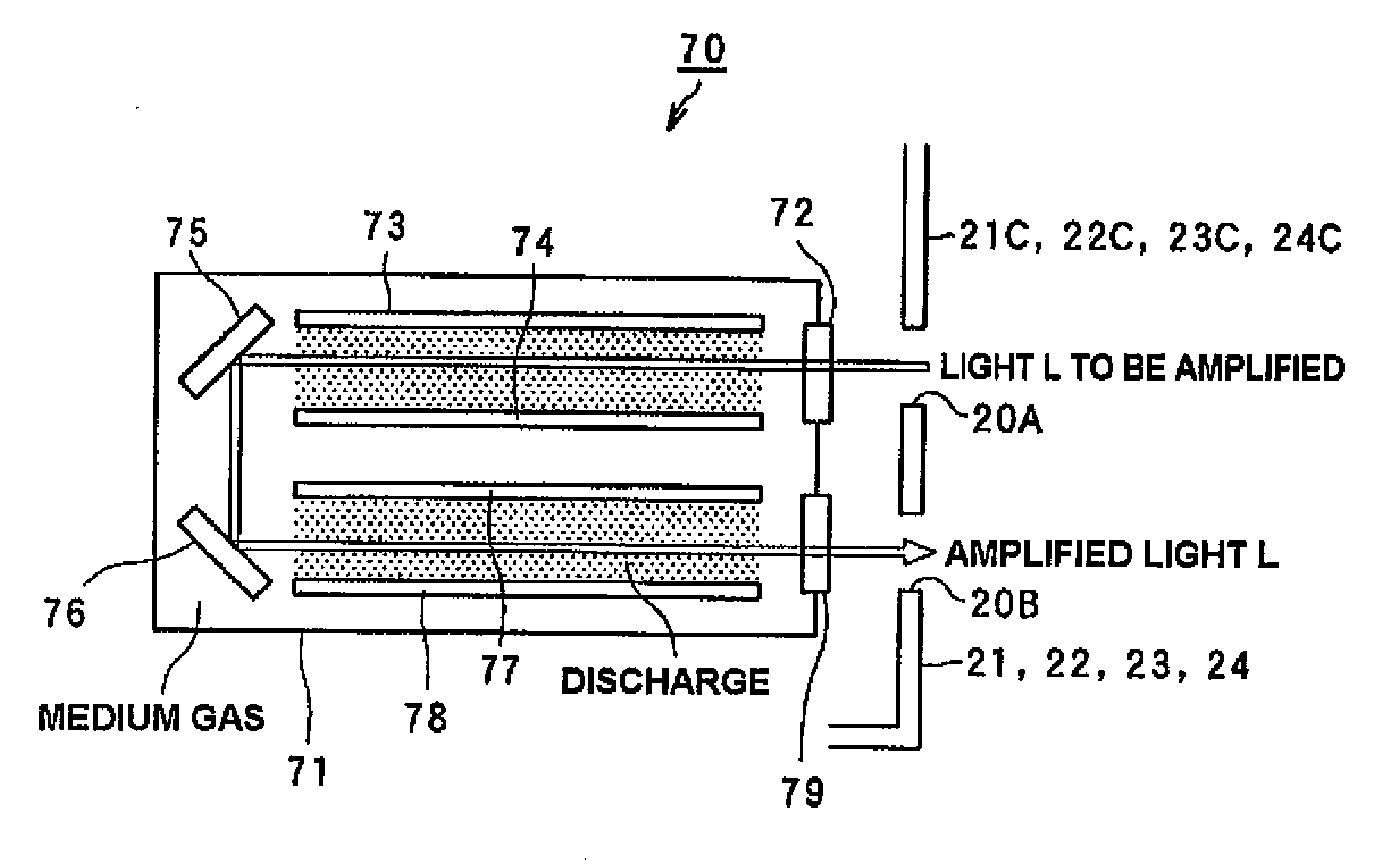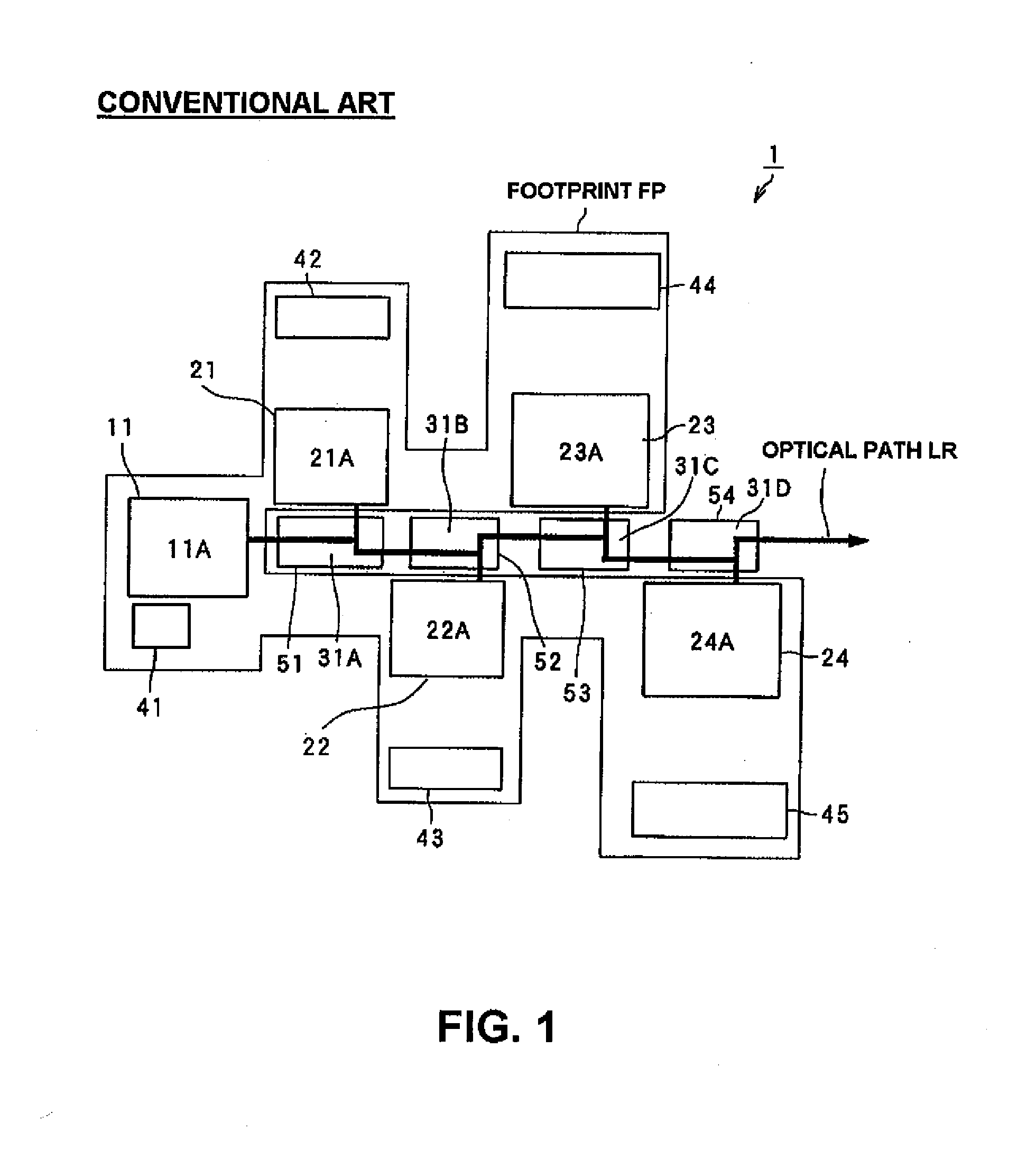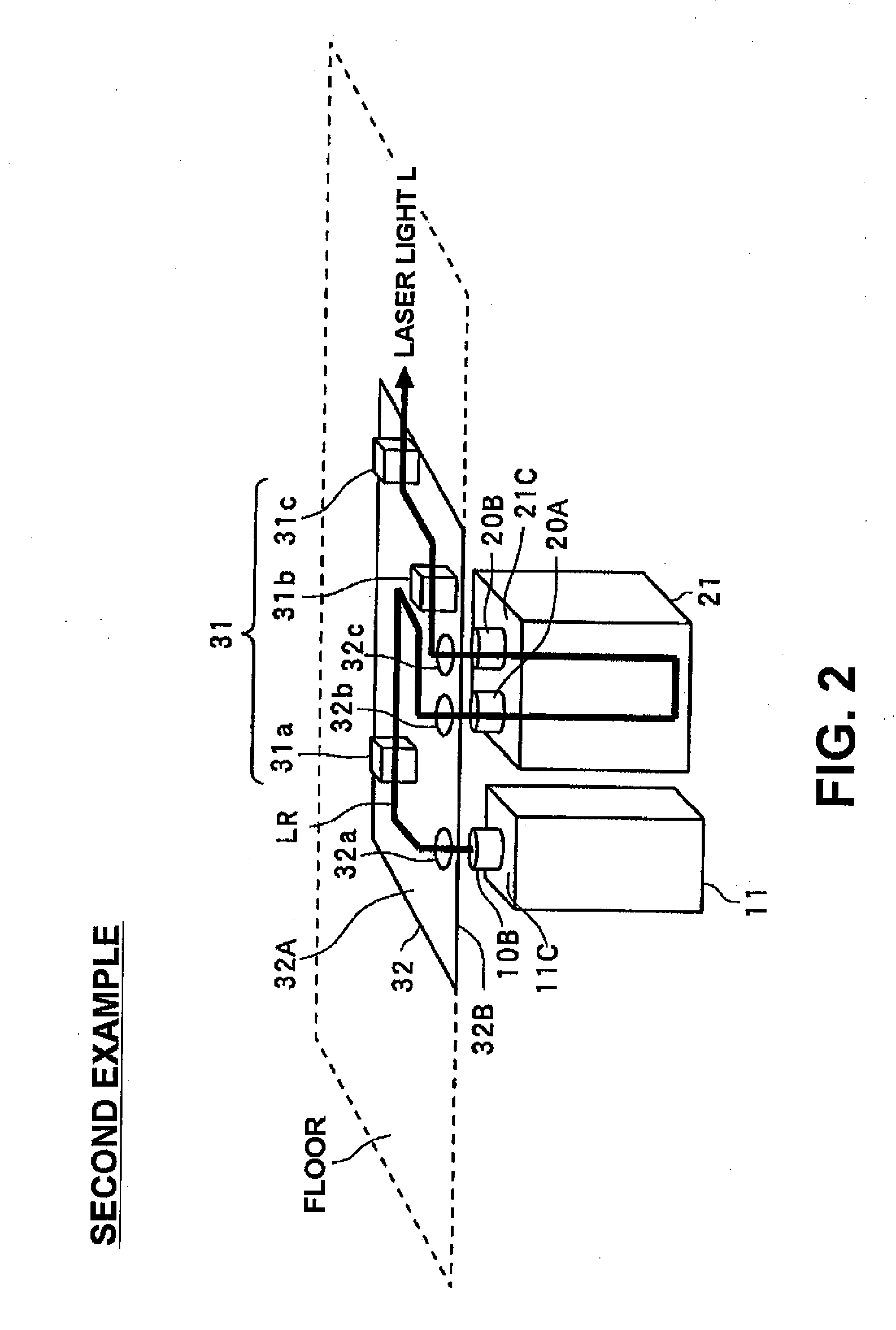Laser device
a laser and laser technology, applied in the field of laser devices, can solve the problems of no cosup>2/sup>laser that can output the 10 kw laser with such short pulse oscillation, and the footprint (occupied space) fp further exceeds 100 m, so as to stabilize the laser output, the effect of reducing the disturbance effect of laser light, and reducing the footprint (occupied area) fp
- Summary
- Abstract
- Description
- Claims
- Application Information
AI Technical Summary
Benefits of technology
Problems solved by technology
Method used
Image
Examples
first example
[0057]FIG. 3 is a configuration diagram of the laser device 1 of the first example, and shows a top view, as is the case with FIG. 1 that illustrates a conventional art. FIGS. 4A and 4B are diagrams showing examples of inner configurations of the oscillator unit 11 and the amplifier units 21, 22, 23, 24 of the first example, respectively. FIGS. 51A and 51B are diagrams showing other examples of inner configurations of the amplifier units 21, 22, 23, 24 of the first example, respectively. FIG. 6 is a perspective view illustrating the laser device 1 of the first example as viewed from the front surface side. FIG. 7 is a perspective view illustrating an external appearance of the optical element module 30 of the laser device 1 of the first example.
[0058]As shown in FIGS. 3 and 6, the laser device 1 of the first example comprises one oscillator unit 11, four amplifier units 21, 22, 23, 24, a group of optical elements 31, power supplies 41, 42, 43, 44, 45 respectively for the oscillator ...
second example
[0093]FIG. 2 is a perspective view showing a configuration of a second example. The housings of the oscillator unit 11 and the amplifier unit 21 are placed below the plate 32 of the optical element module 30. The oscillator unit 11, the amplifier unit 21, and the plate 32 are arranged such that the outgoing light from the output port 10B provided to the oscillator unit 11, and the incoming and the outgoing lights passing through the input port 20A and the output port 20B provided to the amplifier unit 21 intersect with the plate 32 via the holes 32a, 32b, 32c formed in the plate 32.
[0094]Thus, the area covered by the oscillator unit 11 and the amplifier 21 is confined within the floor area covered by the plate 32, whereby the footprint (occupied area) FP can be greatly reduced as compared with the conventional art (FIG. 1).
[0095]In FIG. 2, only the housings of the oscillator unit 11 and the amplifier unit 21 are placed below the plate 32 of the optical element module 30. However, it...
third example
[0097]In the first example, the housings of the oscillator unit 11 and the amplifier units 21, 22 are layered in the vertical direction, while the housings of the amplifier units 23, 24 are layered in the vertical direction. Thus, at the time of maintenance of the oscillator unit 11 and the amplifier units 21, 22, 23, 24, the operator may not access the check / maintenance target because of being blocked by the other layered units.
[0098]Thus, it may be possible to provide a maintenance mechanism 90 as shown in FIGS. 8A through 8C to make it possible for the oscillator unit 11 and the amplifier units 21, 22, 23, 24 to be freely drawn toward the rear direction of the optical element module 30, and to enable the operator to access the check or maintenance target.
[0099]FIG. 8A is a diagram illustrating the maintenance mechanism 90 as viewed from a side of the optical element module 30. FIG. 8B is a diagram illustrating the maintenance mechanism 90 as viewed from a rear side of the optical...
PUM
 Login to View More
Login to View More Abstract
Description
Claims
Application Information
 Login to View More
Login to View More - R&D
- Intellectual Property
- Life Sciences
- Materials
- Tech Scout
- Unparalleled Data Quality
- Higher Quality Content
- 60% Fewer Hallucinations
Browse by: Latest US Patents, China's latest patents, Technical Efficacy Thesaurus, Application Domain, Technology Topic, Popular Technical Reports.
© 2025 PatSnap. All rights reserved.Legal|Privacy policy|Modern Slavery Act Transparency Statement|Sitemap|About US| Contact US: help@patsnap.com



